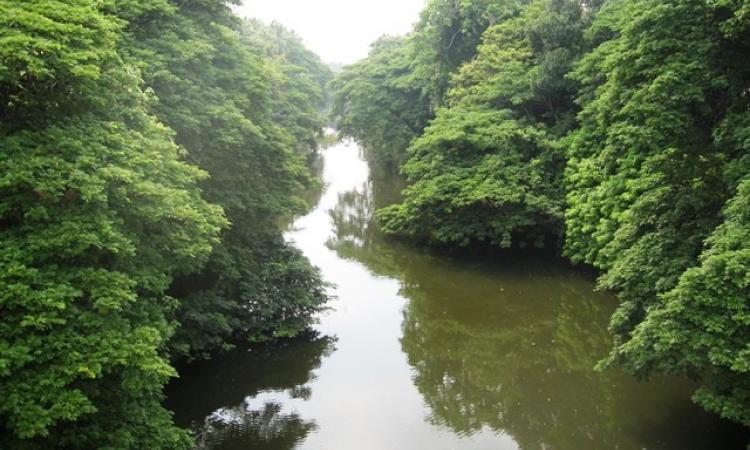
River water temperature, dissolved oxygen and river health, the linkages
River Water Temperature (RWT), and Dissolved Oxygen (DO) are crucial indicators of the water quality of rivers and determine the health of the river and its ecosystem.
Water temperature is one of the most important factors affecting water bodies and can impact dissolved oxygen levels, chemical and biological processes, species compositions, water density and stratification, and life-stages in different organisms living in the water.
Aquatic organisms need optimal temperatures for their survival and high and low temperatures can have detrimental effects on aquatic life increasing stress levels and can lead to death. The reproductive stage (spawning & embryo development) in fish is the most temperature-sensitive period. Temperature also affects ammonia levels in the water, the rate of photosynthesis, metabolic rates in aquatic organisms, and increase pollution levels thus threatening the survival of aquatic organisms.
Water temperatures can fluctuate throughout the day, and between seasons. While water temperatures in freshwater systems are heated by the sun, a number of factors such as precipitation, groundwater, and surface runoff can influence the water temperatures leading to loss or gain in heat depending on condensation and evaporation.
A recently published study titled 'Impact of climate change on river water temperature and dissolved oxygen: Indian riverine thermal regimes' published in Nature Scientific Reports informs that global warming has been found to have an adverse impact on River Water Temperatures (RWT), which in turn are known to adversely impact Dissolved oxygen (DO) levels in rivers, which are important indicators of river water quality.
The influence of climate change on DO in relation to RWT can lead to water quality degradation and ecological disturbances in the river habitats and affect the river’s ability to self-purify by lowering the amount of oxygen that can be dissolved and utilised for biodegradation. Hence, understanding climate change impacts on RWT and DO are important in understanding the projected river water quality and possible alterations in quality standards.
While recent studies have looked at how climate change affects RWTs, the question of how climate change affects DO has yet to be answered.
Rivers in India
Tropical rivers receive more solar radiation and have higher RWTs. For example, Indian tropical river systems experience the highest RWTs during low flow periods of non-monsoon and summer months. Seasonality plays a vital role in the Indian river systems as maintaining flows in the summer season is a challenge leading to water quality deterioration.
The assessment of DO saturation rates with respect to RWT is crucial for Indian river systems due to minimum flows and higher temperatures during non-monsoon seasons.
This study aimed at predicting the impacts of climate change on riverine thermal processes in India and assessing the possible variability in DO saturation levels with respect to RWT in seven majorly polluted catchments of India namely Ganga, Narmada, Cauvery, Sabarmati, Tungabhadra, Musi and Godavari in the time period of 2071-2100.
The study predicts that:
- The dissolved oxygen levels (DO) will be influenced by rising river water temperatures (RWT) in Indian rivers due to climate change and these higher temperatures will reduce the assimilative capacity of the river by affecting its oxygen metabolism, in addition to lowering saturation, and consequently alter the river water quality needing redefining of quality standards under climate change scenarios for 2071–2100.
- Higher atmospheric temperatures will trigger higher river water temperatures (RWT), which will increase by up to 7 °C for summer, reaching close to 35 °C, and lead to decreased Dissolved oxygen (DO) saturation capacity by 2–12 percent in the rivers by the year 2071–2100.
- For every 1 °C river water temperature (RWT) increase, there will be a 2.3 percent decrease in Dissolved oxygen (DO) concentrations over Indian catchments under climate change scenarios.
- The summer river water temperature (RWT) increase for Tunga-Bhadra, Sabarmati, Musi, and Ganga basins will be 3.1, 3.8, 5.8, 7.3 C, respectively, with a more pronounced increase of 7.8 C for the Narmada river for 2071–2100.
- The decrease in Dissolved oxygen (DO) concentrations with respect to summer river water temperature (RWT) increase will be higher for Narmada, Musi, and Ganga catchment sites, and the percentage of Dissolved oxygen decreases for 2071–2100 for the three rivers will be 2.4 percent, 9.3 percent, and 11.9 percent respectively.
- The rise in river water tempertures (RWT) will be lower than those of atmospheric temperatures (AT), that show a rising trend except for the Cauvery catchment.
- RWTs show a rising trend except for Cauvery, Godavari and Ganga catchments, and the rising rates vary between 0.01 and 0.17 °C/ year.
- DO shows a decreasing trend except for Cauvery, Godavari and Ganga catchments where there is a significant decreasing trend of AT and RWT.
- RWT and AT are directly correlated, but RWT and DO are inversely correlated. However, for the Godavari and Ganga catchment, the water temperature shows a decreasing trend with an increasing atmospheric temperature. This indicates that changes in river water temperature may not be influenced by atmospheric temperature alone, but by a number of other factors such as streamflow, river geometry, groundwater inputs, slope, water depth, etc.
The study provides an assessment of the impacts of rise in river water temperatures (RWTs) on dissolved oxygen content in the river waters indicative of the health of rivers and its ecology under climate change scenarios, which will be greatly helpful for the policymakers and pollution control authorities to design sustainable river water quality management strategies for the future, argues the paper.